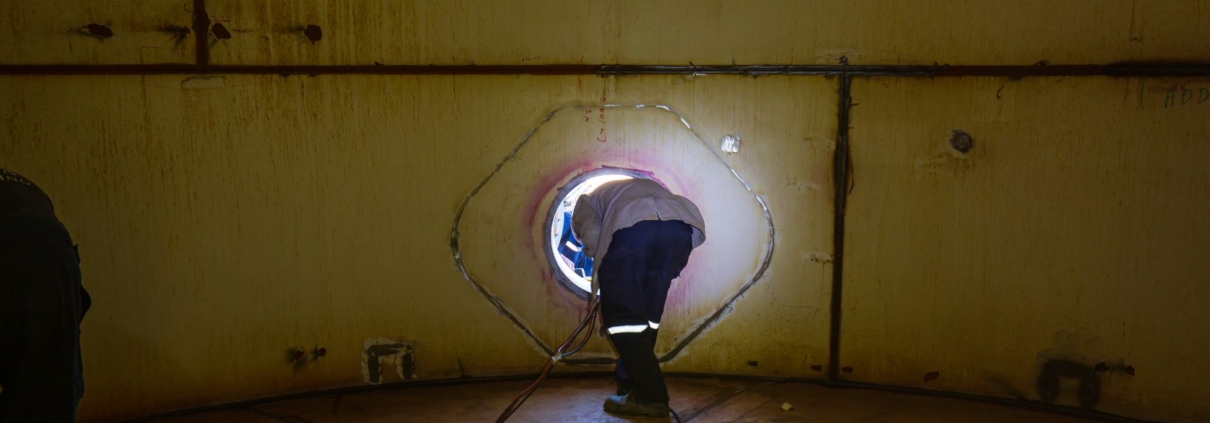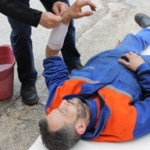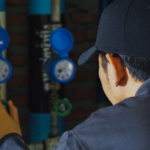What To Do When Trapped In A Confined Space
Imagine you’re in a small, enclosed area where moving even a few steps is difficult. The walls seem to close in, and the air is thin and stifling. This is what it’s like to be in a confined space, an area where you can feel trapped without warning. For many people, working in these spaces is part of their job. Unfortunately, confined spaces can pose significant risks, including limited ventilation and restricted movement, making it challenging to escape during an emergency. That’s why understanding the dangers and knowing what to do if you find yourself trapped is crucial for staying safe.
Being trapped in a confined space isn’t something you plan for, but it’s a scenario you need to prepare for. Knowing the right steps could make all the difference between a close call and a serious incident. From understanding potential hazards to having a clear plan, these are things anyone working in such environments should be aware of. This knowledge doesn’t just protect you—it helps ensure that everyone can return home safely at the end of the day.
Recognizing The Risk Inside Confined Spaces
Confined spaces come with their own set of challenges that you might not find in more open areas. Understanding these risks is the first step in reducing potential harm. Common hazards include poor air quality, which can lead to suffocation or poisoning due to harmful gases. Sometimes, the risk involves flooding, especially in spaces prone to water ingress like sewers or tanks. Fires and explosions are also potential concerns if flammable substances are present. It’s important to be aware that confined spaces may not always look dangerous, but the unseen threats, like lack of oxygen or chemical exposure, can be life-threatening.
Understanding these dangers requires recognizing warning signs quickly. Look out for unusual sounds, like gas hissing, or strange odors, which might signal a leak. Your instincts can also be a warning. If the air feels thick or you experience dizziness, these could be signs of poor ventilation. Here’s what to keep in mind when assessing risk in confined spaces:
– Air Quality: Breathable air is crucial. Check for adequate ventilation and be cautious of gases.
– Visibility: Poor lighting can lead to accidents. Ensure there’s sufficient lighting.
– Temperature Changes: Drastic temperature shifts might indicate chemical reactions or operations occurring within.
– Physical Obstacles: Be aware of structural changes, like beams or machinery, that could restrict movement.
Recognizing these signs quickly allows you to take action before conditions worsen. This knowledge forms part of the mental checklist you should run through every time you enter a confined space.
Initial Steps To Take When Trapped
Finding yourself in a confined space with no easy way out can be unsettling. The first thing to remember is not to panic. Staying calm is more than a cliché—it helps you think clearly and act effectively. Once you’ve got a grip on the situation, your next move should be assessing your surroundings. Determine if there’s immediate danger from things like a gas leak or water rising.
Securing ventilation should be one of your top priorities. If there’s a switch or option to increase airflow, use it. Fresh air is critical, especially when other risks, like toxic gases, are present. If you detect a gas, refrain from using any electronic devices that could create a spark.
It’s also important to consider your options. Is there a reachable escape route? Would moving further complicate things? Conserve your energy and avoid rash decisions. This isn’t the time for heroics; safety comes first. Keep an eye out for potential help, and make sure your phone, if handy, is ready for emergencies to contact someone outside the space. These initial steps lay the groundwork for maintaining safety while awaiting help.
Effective Communication Strategies
When you’re trapped in a confined space, communicating effectively can be your lifeline. Signaling for help should be a priority, and you can do this in several ways. If you have a mobile phone, try calling for help as soon as possible. If phone signals are weak, look for alternative methods. Tapping on metal surfaces can create sounds that travel, alerting others to your location. It’s a simple yet effective way to communicate without words.
Most confined spaces might limit your ability to speak loudly or use typical communication devices. In these situations, any available devices that don’t rely on outside networks, such as walkie-talkies, if present, can be useful. It’s also wise to have a basic plan prepared ahead of time, like pre-arranged signals or codes with workers outside the space. Ensure these plans are practiced regularly, so everyone knows how to respond during an emergency. Remember, clear and calm communication is more important than ever when you’re in a tight spot.
The Role of Confined Space Rescue Training
Being well-prepared is more than half the battle when facing potential accidents. This is where specialized training can offer invaluable support. Confined space rescue training educates individuals on what to do in emergencies, including effective self-rescue techniques and how to assist others safely. For those in Perth, attending such training can provide the skills needed to handle unexpected situations with confidence.
One key advantage of this training is an improved understanding of safety equipment and how to use it effectively. Familiarity with this gear often makes the difference between a safe outcome and a hazardous one. Additionally, it enhances your ability to spot dangers early and react appropriately, reducing panic and confusion. This preparation is especially relevant for those frequently working in enclosed areas, as it equips you with practical tools and mental readiness.
Staying Safe Until Help Arrives
If trapped, staying calm and safe while waiting for rescue is critical. Safeguard your energy to avoid exhaustion. Try to stay in a comfortable and secure position that reduces the risk of injury. In confined spaces, small movements could lead to accidents, so it’s best to keep your actions deliberate and necessary.
Here are practical tips to stay safe:
– Relax Your Breathing: Keep breaths slow and deep to conserve oxygen.
– Monitor Environmental Changes: Stay alert to any shifts, like temperature or sounds that might indicate danger.
– Self-Check for Signs of Distress: Be mindful of your body’s signals, such as dizziness or fatigue, which may need addressing.
Rescuers typically know the challenges of working in these tight areas, so they come prepared. Trust in their expertise will help you stay focused and conserve your energy until they reach you.
Wrapping It Up
Understanding what to do in a confined space emergency can significantly improve your safety and chances of a positive outcome. By being mindful of risks, recognizing early warning signs, and practicing effective communication, workers can maintain a safer working environment. Confined space rescue training serves as a crucial component, ensuring you’re not only aware of potential hazards but also equipped to handle them.
Preparation is key to navigating these complex scenarios, and while no one wants to imagine being trapped, having a clear safety plan can be reassuring. By staying informed and ready, you contribute to a safer workplace, both for yourself and others. This training offers the knowledge and skills that serve you beyond the classroom, giving peace of mind and confidence wherever such challenges arise.
Preparedness can save lives, especially in dangerous work situations. To boost your safety skills when working in enclosed spaces, consider enrolling in confined space rescue training near me with Access Unlimited. Learn how to handle emergencies and keep yourself and your team safe whenever you find yourself in a challenging situation.



